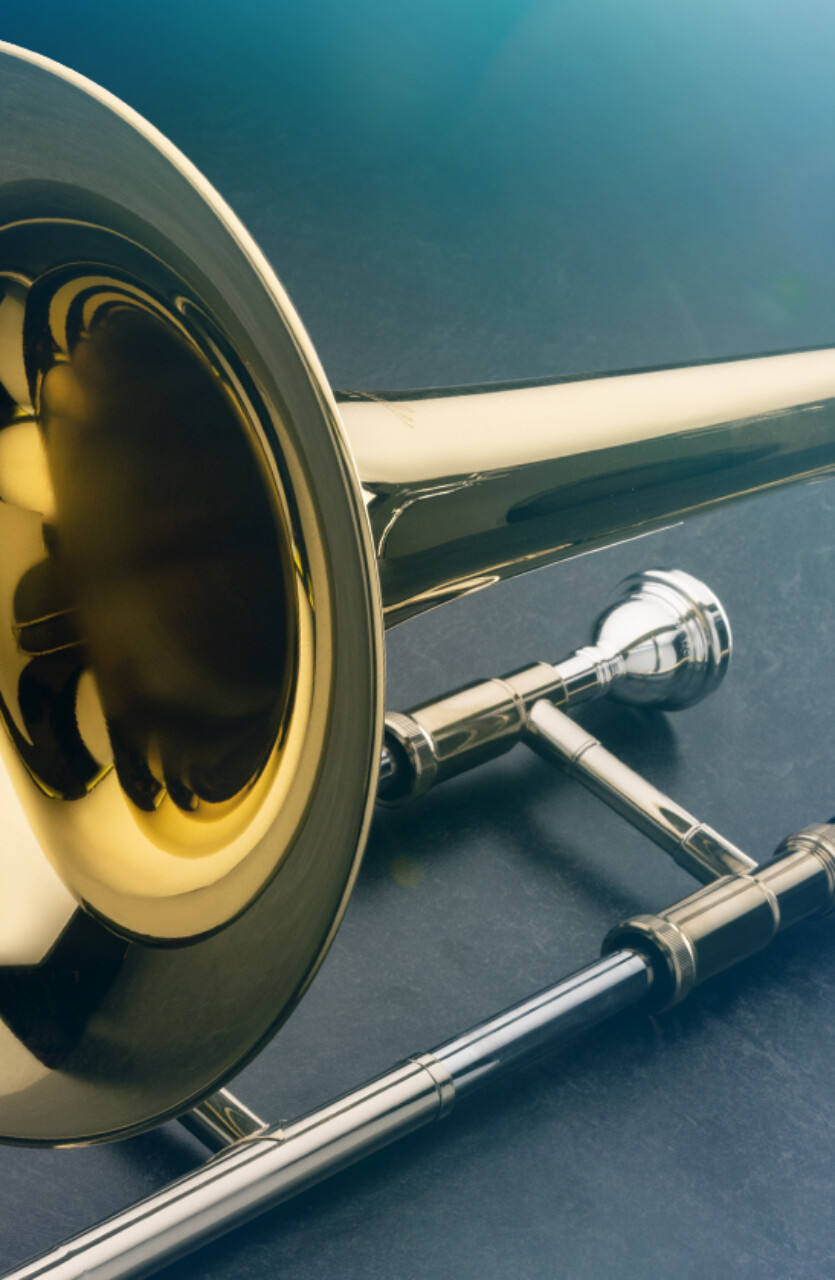The brass family comprises a group of instruments known for their bold, resonant sound produced by vibrating lips into a cup-shaped mouthpiece. Key members include the trumpet, trombone, French horn, and tuba, each with unique characteristics and roles in musical compositions. Trumpets provide piercing, fanfare-like tones, while trombones offer sliding pitches and rich bass support. French horns add warmth and depth with their mellow timbre, and tubas anchor ensembles with their deep, powerful bass lines. Together, these instruments form the backbone of orchestral brass sections, lending both brilliance and depth to classical symphonies, jazz ensembles, and marching bands. Their versatility across genres highlights their essential role in shaping the dynamic and expressive qualities of musical performances worldwide.
The trumpet, a brass instrument renowned for its bright and powerful sound, has played a vital role in music for centuries. With origins dating back to ancient civilizations, it evolved into its modern form by the late Middle Ages. Featuring a cylindrical bore and a cup-shaped mouthpiece, the trumpet produces its signature sound by buzzing the lips into the mouthpiece and manipulating valves to change pitch. Its piercing tones can cut through orchestral textures or lead bold fanfares in ceremonial settings. From classical symphonies to jazz improvisations, the trumpet’s versatility and ability to convey both grandeur and emotion have solidified its status as a cornerstone of brass ensembles worldwide, cherished for its dynamic range and expressive capabilities.
The French horn, with its iconic coiled tubing and rich, warm tones, is a cornerstone of orchestral and chamber music ensembles. Originating from early hunting horns, it evolved in the 19th century with the addition of valves, enhancing its range and expressive capabilities. Played with a cup-shaped mouthpiece and requiring skilled hand technique within the bell, the French horn produces a sound that ranges from noble and majestic to hauntingly lyrical. Its versatile role in classical repertoire and its ability to blend seamlessly with other instruments or shine in solo passages make it a beloved and essential component of the symphonic palette. Whether commanding the brass section in grand orchestral movements or delicately weaving melodic lines, the French horn continues to captivate listeners with its unique blend of power and elegance.
The trombone, characterized by its distinctive slide and brass construction, is a vital member of both classical and contemporary music ensembles. Originating in the Renaissance period, it has since evolved into various types including tenor, bass, and alto trombones, each offering unique tonal qualities and versatility. The trombone’s ability to smoothly glide between pitches using the slide gives it a distinctive voice, capable of producing both powerful fanfares and lyrical melodies. Its rich, resonant sound adds depth and texture to orchestral compositions, jazz arrangements, and beyond, making it a beloved instrument for both solo performances and ensemble settings. With its blend of historical tradition and modern innovation, the trombone continues to captivate audiences with its expressive range and dynamic presence in musical landscapes worldwide.
The euphonium, alternatively known as the baritone in certain musical contexts, is a distinguished member of the brass family celebrated for its rich, warm tones and versatile capabilities. Featuring a conical bore and a characteristic upright bell, the euphonium produces a melodious sound that blends elements of both the trumpet and tuba. Originating in the 19th century, it has become a cornerstone in concert bands, brass bands, and orchestras worldwide, valued for its expressive range and ability to convey both lyrical melodies and robust harmonies. Played with a cup-shaped mouthpiece and utilizing valves to change pitch, the euphonium is adept at providing harmonic foundation in ensemble settings while also shining in solo performances, making it an indispensable instrument for musicians seeking both depth and agility in their musical expression.
The tuba, revered for its commanding presence and deep, resonant tones, stands as the largest and lowest-pitched instrument in the brass family. Evolving from its origins in the early 19th century, the tuba boasts a distinctive bell shape and utilizes valves to navigate its wide range of notes. Its rich sound serves as the foundation of orchestral and wind ensemble music, providing essential bass lines that anchor compositions with a sense of depth and power. Whether in classical symphonies, military bands, or contemporary jazz settings, the tuba’s versatility shines through, capable of delivering both rhythmic precision and melodic richness. Valued for its ability to add weight and warmth to musical arrangements, the tuba remains a beloved and indispensable component of the brass section, admired for its impressive sound and expressive potential.
"There is two kinds of music, the good, and the bad. I play the good kind."






